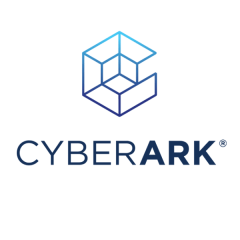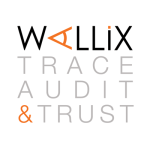What is our primary use case?
CyberArk's Privileged Access Management solution covers a whole range of features, like privileged web access, private vault, privileged session manager rights for a session in isolation, privileged threat analytics for analytics, and private sessions. We also use CyberArk's Application Access Manager, which includes their credential providers, such as agents and run servers. Then there is a central credential provider, which is API-based credential retrieval, and DAP or Conjur. This is more of a DevOps model for credential provisioning. We also have the Central Policy Manager, which rotates the credentials associated with unprivileged or servers accounts. It's a huge environment.
Those are all the different functions we use. We initially purchased CyberArk for privileged access manager and session isolation of privileged users. By privileged users, I mean main admins, global admins, and preps like Azure or Office 365. Our initial use case was to manage those users who could drastically impact the environment if their credentials were compromised.
After we purchased the product, we had a third party on it. They suggested we also leverage CyberArk as part of the platform for managing service accounts, i.e. go out and proactively rotate credentials that are running or ordering services. That's another kind of big use case that we started implementing a couple of years. It's long work. It is tough to do, there's a lot of cases where it just doesn't work right, but overall it's been pretty valuable.
How has it helped my organization?
From a security perspective, CyberArk PAM gives us a lot of control and visibility into what our privileged users are doing. In terms of securing our cloud-native apps, we're just getting into deploying things to Azure, AWS, etc., and DAP brings a lot of value to that because it is cloud-agnostic credential retrieval. Azure has their key vaults, and AWS has their version if you are a multi-cloud solution. CyberArk's Secrets Manager, or DAP, brings a lot of value because you only have to learn how to integrate your apps with one solution that can be deployed across multiple clouds.
I will say that CyberArk is struggling with some of the cloud integrations. For instance, Azure has a native identity solution, and Microsoft keeps causing issues with their ability to identify the hosts calling back. Some cloud providers are trying to lock CyberArk and other tools out of their environment and force you to use their native one. With that said, I don't use the other functions. I don't use the containerization Kubernetes integration or anything like that. We're not at that point yet. One of my significant concerns about investing a lot of time in CyberArk Conjur or DAP solution is that Microsoft seems to be trying to push them out of that space, and if they do that, then all of that work is null and void.
What is most valuable?
In our initial use case, we found CyberArk's privileged session management functionality to be incredibly flexible. It's challenging to write these plug-ins, but if you have somebody with a development background, you can write all sorts of custom connections to support different functional applications. We've written over a hundred custom connectors ourselves that allow us to do all types of privileged session management for various applications. On top of that, the rest of the API-based central credential providers allow us to get away from credentials that may be hard-coded in the script or some application.
What needs improvement?
CyberArk's web console isn't in a great state. Over the last three years, if not more, it has been transitioning from what they call the "classic UI" to its modern interface. However, there are a lot of features that you can only use in the classic interface. Hence, each version seems to put more makeup on the modern interface, but all of the complex functionality you need is still in the classic UI.
I'm not sure they've figured out how to transition, and they're kind of in a weird state. So, while CyberArk has made strides, the web interface is painful, particularly as an administrator, because you have to bounce between these different user interfaces. It is an incredibly complex solution that requires at least a dedicated employee or more to maintain it, support it, and understand it thoroughly. If you don't have that, it's just not the right solution for you because it is very complicated.
Many of the infrastructure folks who use the product dislike it because it complicates their workflow. They get a little less control, and they have to go through a specific solution. It proactively logs in for them, which obfuscates some of the issues that they may be troubleshooting. And I think some of the consumers aren't big fans of the product. Also, I feel that in the last year or so, CyberArk has been pushing very hard for customers to go to their cloud solution. It doesn't have the same flexibility as the on-premise version, which is problematic because that's where I see a lot of value in the solution.
For how long have I used the solution?
I've been using CyberArk PAM for about four years now.
How are customer service and support?
CyberArk support isn't the worst, but it's certainly not the best. I'd give it a six out of 10. They were responsive. After you submit a ticket, you get the typical response. You gather all the logs and send them, and then they do some analysis. They typically send you back to get more specific logs, so it's a standard support experience. I would not say it's great, but it is not terrible either.
Overall, as a partner in our digital transformation, CyberArk has been great. The technology adds a lot of value, but they're also very much engaged and concerned. The customer success manager very much wants to make sure we're getting value out of the tool. I guess my only concern there is that they are pushing very heavily for customers to switch to their new cloud solutions that may or may not fit our needs or expectations. I am worried that they're going to push even harder. For example, CyberArk might start offering features only available in the cloud solution that would make our future somewhat tenuous depending on what's going on. So my only hangup is that they're pushing cloud solutions that I don't think are very mature yet.
How would you rate customer service and support?
How was the initial setup?
The environment's architecture is very complex, depending on your use cases, and I'm talking about CyberArk as a whole. Their past solution — their AM solution — and all of the other solutions bundled together are straightforward, and it all needs to work together. Depending on your use case and the connected components you need to have or build, you must learn a lot. So, it's not as simple a thing to deploy — at least on-premise. It isn't straightforward. Our environment comprises 20 to 30 servers that we had to spin up and connect. Disaster recovery has to be thoroughly vetted, discussed, and documented because as you onboard and manage those privileged accounts, you need a way to get to them if something goes wrong.
It took about a month to get the product running and several months to onboard users. And when we start talking about Application Access Manager, that's ongoing, and I think that'll probably be ongoing for a very long time. We were targeting our specific use cases, so we started with interactive users. The whole idea was to restrict, manage, and monitor those interactive users. Our rollout proceeded from the most privileged users to the less privileged users. Then we started targeting service accounts and that kind of stuff. So it was a phased approach from highest risk to lowest risk to lower risk.
CyberArk PAM requires a lot of maintenance. Right now, we have about one and a half people, but I would say we need to add several more people to do a better job and add a lot of functionality. It requires a lot of maintenance and monitoring. They've relied on many different Microsoft features to secure the privileged session manager. It requires a lot of tuning, monitoring, and managing those solutions. They use AppLocker to restrict and isolate these running sessions, and AppLocker breaks all the time, so you have to go in and troubleshoot why it's broken and tweak it. That could mean adding a new rule or updating an application. It is a lot of maintenance, depending on your use case. But then again, we have gone very hard into privileged session management and developed over a hundred custom connectors. Another customer might deploy RDP and call it a day, drastically reducing maintenance.
What was our ROI?
If you ask me the ROI, I'm not sure I could give you an exact number. Security tools are pretty tricky when it comes to that. But if you're adopting a risk-based approach, this substantially reduces risk. It brought a lot of visibility and allowed us to monitor all of our privileged users, so it is valuable from the perspective of KPI, modern solutions, and risk reduction. If we were to score this on an internal risk review, our previous risk would rank four out of five, and we've lowered this to a low severity risk.
What's my experience with pricing, setup cost, and licensing?
CyberArk had just changed switched their licensing model to perpetual licenses when we purchased, including the whole PAM Suite. Before we bought it, they were licensing each function individually, which got complicated and very expensive. When we decided to buy it, it was much more straightforward and still quite expensive, but it brings a lot of value and risk reduction to the organization.
In the last year or so, it's my understanding that they have switched from a perpetual licensing model to pushing companies to a subscription-based model. I have not dealt with this yet, so I'm not sure my feedback on licensing would be too valuable because they've moved away from the license type we purchased.
Which other solutions did I evaluate?
This was our first foray into the PAM space. We did a proof of concept evaluating three different solutions, so CyberArk was the clear winner. I don't want to speak ill of any other solutions, but I will say that CyberArk's architecture was much more secure. Other competing solutions may leverage an agent that is installed on your local machine and runs your privileged applications locally, leaving a lot to be desired from a security perspective.
CyberArk uses remote desktop gateways similar to Microsoft's RDS functionality, and it abstracts that privileged application from your workstation. So even if you're compromised, a malicious actor on your laptop or workstation would not be able to get to that privileged application. This was very valuable to us. Other solutions did not have that functionality.
What other advice do I have?
As it stands today, I would rate CyberArk PAM nine out of 10. However, I'm concerned about the future of the platform. While I've had nothing but great experiences so far, I have concerns about how they've been pushing that cloud solution in the last year and a half. I feel like they're going to pressure us to move to the cloud even though they're not mature enough in the cloud.
Rather than create a cloud-native version, they've migrated their on-premise solution to the cloud, but they don't allow cloud customers to access the backend, which I recommend all the time as an on-premise user. Instead, you have to submit a support ticket and have their support do things on your behalf, which delays your ability to work with the tool. Furthermore, they may not be willing to make the modifications you want because it would affect their ability to impact the solution consistently. CyberArk designed the on-premise version to be incredibly flexible, and I have never found a use case where I can't do the work I want to do. Their cloud model discards a lot of that flexibility, which is where I see a lot of value, so I have concerns about the future of the tool.
Also, I'd like to point out that service account management is incredibly hard, particularly in a company that's been around for a while. Any company looking to adopt service account management needs to know that it's not as easy as vendors make it sound. Many things don't work right out of the box, so the most important lesson we've learned is to calibrate the expectations of senior management when it comes to service account management because it is a lot harder than anybody thinks. You're likely to break things in the process of trying to manage these accounts.
Which deployment model are you using for this solution?
On-premises
Disclosure: PeerSpot contacted the reviewer to collect the review and to validate authenticity. The reviewer was referred by the vendor, but the review is not subject to editing or approval by the vendor.
















